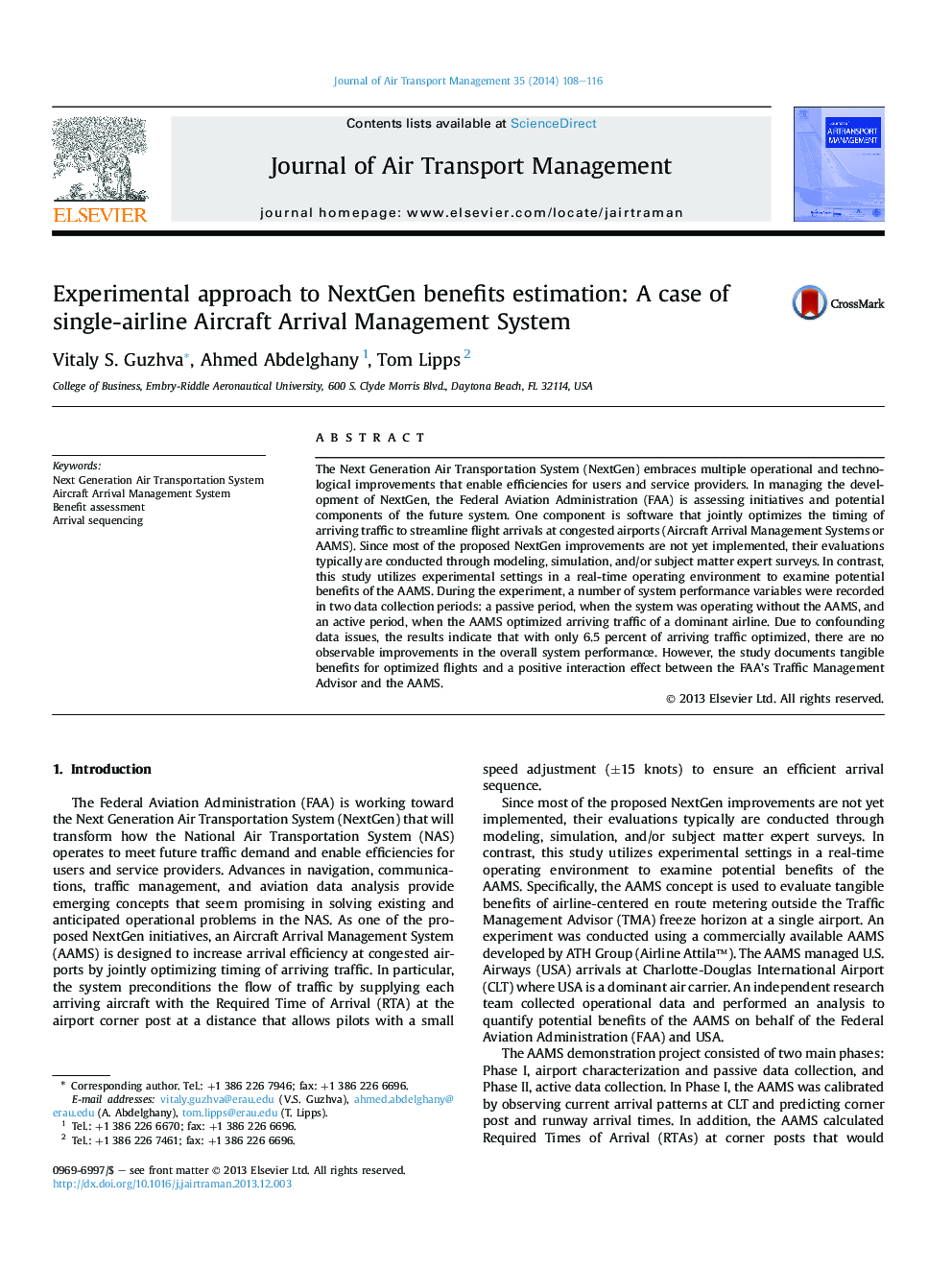| Article ID | Journal | Published Year | Pages | File Type |
|---|---|---|---|---|
| 1030878 | Journal of Air Transport Management | 2014 | 9 Pages |
The Next Generation Air Transportation System (NextGen) embraces multiple operational and technological improvements that enable efficiencies for users and service providers. In managing the development of NextGen, the Federal Aviation Administration (FAA) is assessing initiatives and potential components of the future system. One component is software that jointly optimizes the timing of arriving traffic to streamline flight arrivals at congested airports (Aircraft Arrival Management Systems or AAMS). Since most of the proposed NextGen improvements are not yet implemented, their evaluations typically are conducted through modeling, simulation, and/or subject matter expert surveys. In contrast, this study utilizes experimental settings in a real-time operating environment to examine potential benefits of the AAMS. During the experiment, a number of system performance variables were recorded in two data collection periods: a passive period, when the system was operating without the AAMS, and an active period, when the AAMS optimized arriving traffic of a dominant airline. Due to confounding data issues, the results indicate that with only 6.5 percent of arriving traffic optimized, there are no observable improvements in the overall system performance. However, the study documents tangible benefits for optimized flights and a positive interaction effect between the FAA's Traffic Management Advisor and the AAMS.
